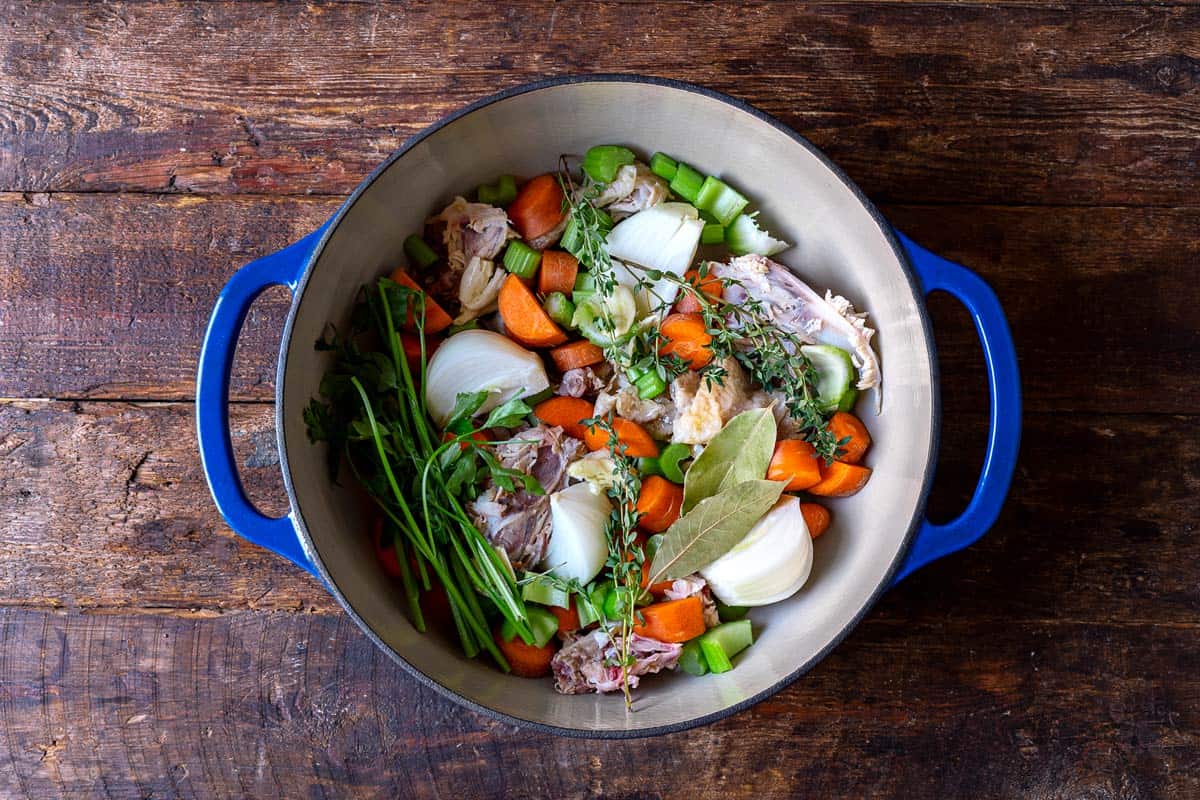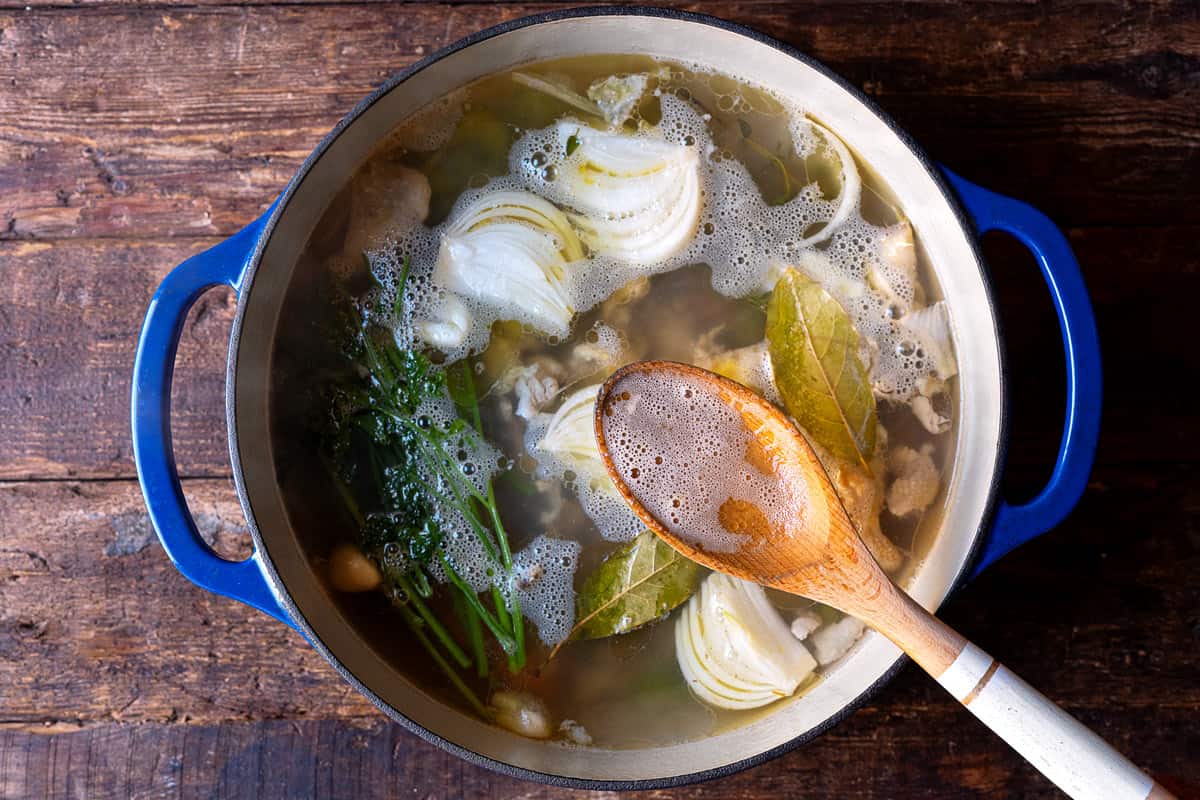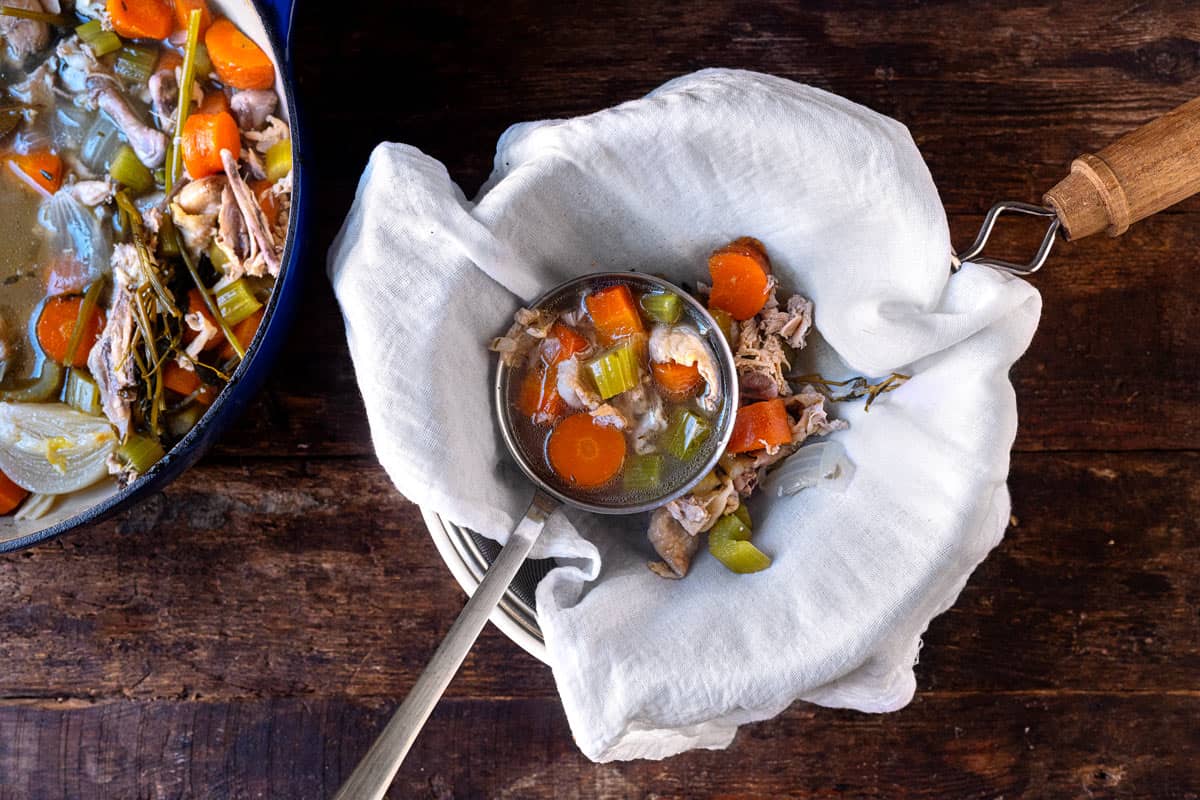Chicken soup is one of the most comforting and nourishing foods out there. There’s nothing better than a bowl of homemade chicken soup made from scratch. But to make chicken soup, you first need a chicken carcass.
If you just roasted a chicken for dinner, you can use the leftover carcass right away to make stock. But what if you want to save the carcass for later? How long can you keep a chicken carcass in the fridge or freezer before making chicken stock?
I did some research to find out how long chicken carcasses last, both in the fridge and freezer. Here’s a comprehensive guide on storing chicken carcasses so you can make delicious homemade soup and stock whenever you want.
How Long Does a Raw Chicken Carcass Last in the Fridge?
If you have a whole raw chicken carcass that hasn’t been cooked yet, you can store it in the refrigerator for 1-2 days. The raw chicken carcass will start to spoil quickly at fridge temperatures. Make sure to store it on the bottom shelf of the fridge so juices don’t drip onto other foods.
It’s best to use the raw chicken carcass as soon as possible Cook it into a full chicken dinner Or simmer the carcass right away to make a quick chicken stock with your aromatics of choice,
How Long Does a Cooked Chicken Carcass Last in the Fridge?
Once the chicken has been roasted or cooked, the leftover carcass will last a bit longer than a raw carcass. A cooked chicken carcass can be refrigerated for 3-5 days before use in making soup stock.
Make sure to let the cooked carcass cool completely before refrigerating it You don’t want it to raise the temperature of the fridge and potentially spoil other food Store the cooked chicken carcass in an airtight container or sealed bag to contain any odors.
Within 3-5 days, use the cooked chicken bones to simmer a pot of stock. The leftover meat will add extra flavor and nutrients to your broth.
Can You Freeze a Chicken Carcass?
Freezing is a great way to save a chicken carcass for many months so you can make stock anytime. Both raw and cooked chicken carcasses freeze well.
To freeze a chicken carcass:
- Let it cool completely before freezing.
- Place the carcass in a freezer bag or airtight container. For raw chicken, double bag it to prevent leaks.
- Remove as much air from the bag as possible before sealing.
- Label the container with the date.
- Freeze for up to 6 months.
Thaw the frozen chicken carcass overnight in the fridge before using. This helps preserve quality and prevents contamination. Once thawed, use within the fridge timelines listed above.
Tips for Storing Chicken Carcasses
Follow these tips to safely store chicken carcasses in the fridge or freezer:
- Refrigerate or freeze the carcass as soon as it has cooled after cooking. Don’t let it sit out too long.
- Place the carcass on the bottom shelf of the fridge so juices don’t drip on other food.
- Use an airtight container or bag when freezing to prevent freezer burn.
- Cooked carcasses develop an off odor quicker than raw. Use cooked carcasses within 3-5 days.
- Raw carcasses last just 1-2 days in the fridge. Cook or freeze them quickly.
- Once thawed, use refrigerated carcasses within the fridge timelines above.
Signs a Chicken Carcass Has Spoiled
A spoiled chicken carcass will have an unpleasant odor, slimy texture, and/or mold growth. Discard the carcass if you notice:
- A strong, foul odor.
- Sliminess or stickiness.
- Visible mold, typically fuzzy green or white spots.
- Darkening and drying around the bones or joints.
Trust your nose above all – if a chicken carcass smells bad, don’t use it. When in doubt, throw it out. Food safety comes first.
Making Chicken Stock From Carcasses
Once you’ve collected 1 or 2 carcasses, here’s a quick process for making homemade chicken stock:
- If using a cooked carcass, remove any remaining meat to use in soup or salads.
- Place the chicken carcass(es) in a large pot. Add any chicken wings, feet, or parts you have for extra collagen.
- Fill the pot with water just to cover the bones. Add a splash of vinegar to help extract nutrients.
- Toss in a halved onion, 2-3 carrots, celery stalks, parsley stems, peppercorns and any other aromatics.
- Bring to a simmer over medium heat. Once simmering, reduce heat and let the stock gently bubble.
- Simmer for 3-4 hours, skimming foam and fat as it rises to the surface. Add more water as needed.
- Strain out the solids. Let the stock cool before refrigerating or freezing.
Your homemade chicken stock is now ready use in soups, stews, sauces, grains, and more. It will keep in the fridge for up to 5 days or in the freezer for 4-6 months.
FAQs
How can you tell if a chicken carcass is still good?
Smell the chicken carcass. It should not have a strong, unpleasant odor. The bones should feel firm and not slimy. If mold is present, it is no longer usable. When in doubt, don’t risk it.
Can you make stock with freezer burned chicken carcasses?
Yes, you can still use chicken carcasses with some freezer burn to make stock. The freezer burn affects surface moisture but not the internal collagen in bones that gives stock body and flavor. Trim any dried out sections before using.
Is it better to use a raw or cooked chicken carcass?
Cooked chicken carcasses make a quicker, milder stock. Raw carcasses require longer simmering to extract more gelatin and nutrients, yielding a richer stock. Combining raw and cooked yields a balanced stock.
Can you use just chicken wings or feet to make stock?
Yes, chicken wings, feet and other bony parts alone can be used to make stock. Thigh bones and backbones also work. For a well-rounded flavor, try to use a mix.
What’s the maximum times you can reuse a chicken carcass for stock?
You can get 2-3 uses out of a single chicken carcass for stock before the bones become too soft and depleted. Make your richest stock the first time, then do lighter subsequent batches. Add fresh aromatics each time.
Conclusion
With proper storage, you can keep fresh chicken carcasses in the fridge for 1-5 days or in the freezer for up to 6 months before making them into soup stock. Keep carcasses well contained, watch for spoilage signs, and trust your nose. Then simmer the bones into a nourishing, from-scratch chicken broth. Homemade soup made with your own stock is worth the wait!

How to Make Chicken Stock
Learning how to make chicken stock is easy. To make homemade chicken stock, place chicken bones, vegetables, herbs and spices into a large pot. Cover with cold water then simmer for about 3 hours. Let it cool, then skim the fat. Store in the refrigerator for up to 5 days or in the freezer for up to 6 months.
- Strip the chicken carcass of meat: This is hardly delicate work. You have to be willing to get your hands dirty to pull and peel the meat off the bones. Don’t forget to flip the bird over and pull the meat from the underside. There is plenty there. Transfer the meat to a container and keep in the fridge. Use it in soup, chicken salad, or to top a bed of greens. Now to address the bones.
- Make the stock: Into a large stock pot or Dutch oven add the chicken carcass – bones, skin and any random bits. Add the chopped celery, carrots, onion, garlic, thyme, bay leaves, parsley stems and peppercorns if using.

- Cover with cold water and simmer: Pour 10 cups of cold water over the ingredients in the stockpot and turn the heat to medium, just until you see a low boil, then reduce to medium low (or whatever temp you need to keep the stove at for a gentle simmer). You want the stock to simmer and never boil for any length of time because boiling can cause the fat and proteins to emulsify and give you dark, greasy stock. Cover with a lid.
- Skim the stock: Simmer on medium low for the next 3 hours. Check every 45 minutes or so and use a spoon to skim any foam that may form off the surface. This is not an exact science. If you lose track of time, and it simmers for 4 hours that’s Ok. You’ll just have a more concentrated stock and might need to add water. If you’re short on time and you only have 2 hours then you’ll just have a lighter stock. That’s Ok too. There is no room for perfectionists in stock making!

- Strain the stock: Layer a fine mesh strainer with cheesecloth. Set it over a large bowl, then ladle the stock into the lined strainer. Press on the solids to release any additional liquid. When it’s done you should have between 5 and 6 cups of stock depending upon how much it has reduced.

- Use, store or freeze: Now that you’ve made this golden elixir with bones and scraps, use it in your next batch of soup or freeze it for a rainy day. Transfer the stock to small containers so it cools down faster. Let it cool completely then cover and transfer to the fridge. Once stock sits in the fridge for a few hours or overnight a fat layer will form on the top. Go ahead and remove that fat layer. The stock will be gelatinous and wobbly when cold. that’s a good thing. Use it within 5 days or freeze it for up to six months.
To make slow cooker chicken stock:
- Add all of the ingredients into your slow cooker.
- Cover with 6 cups of water and turn to high. If you’re going to be around in an hour to reduce it to low, if not, then just set it low. You don’t need as much water when making it in a slow cooker because you don’t have as much evaporation.
- Secure the lid and let it bubble away all day while you’re at work or overnight while you’re sleeping.
- When ready, pour the stock through a fine mesh strainer.
- Let it cool completely then store it in the fridge or freeze it.
